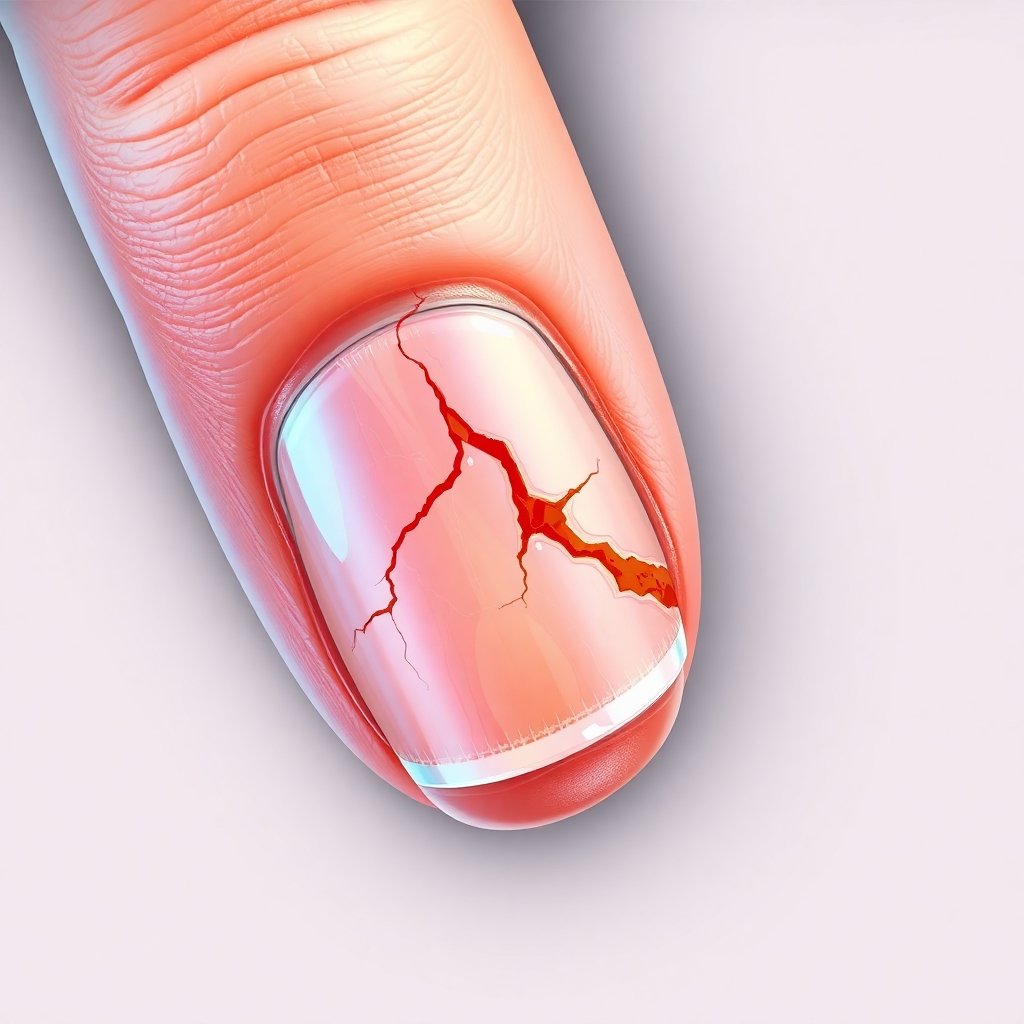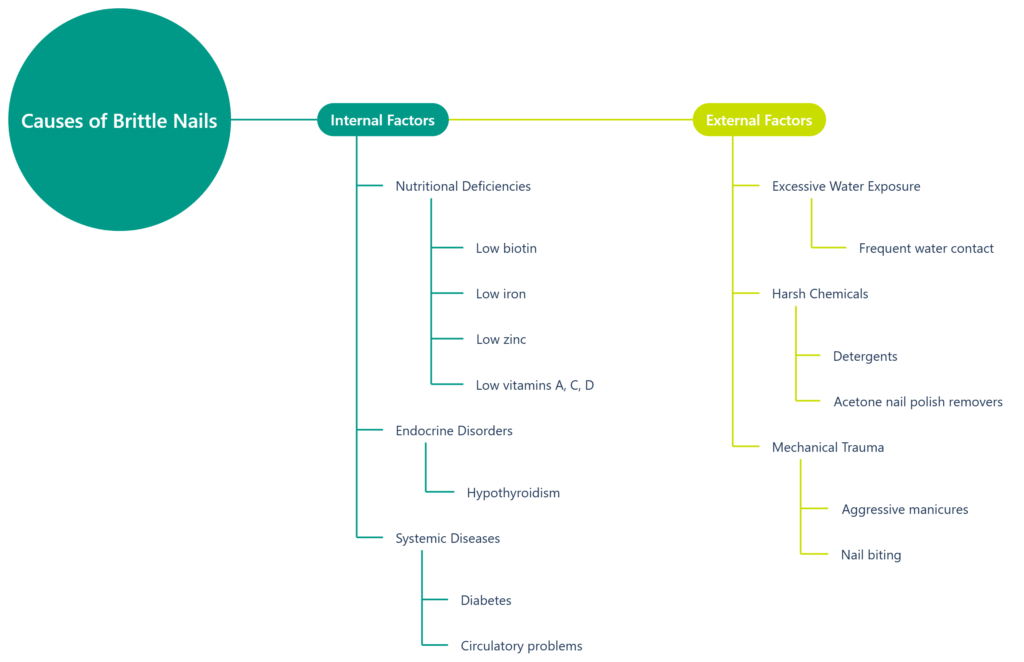
Introduction
Brittle nails, also known as onychoschizia, are often seen as a minor cosmetic issue. However, they can indicate underlying internal imbalances or external damage. Understanding the causes and adopting scientifically supported solutions is essential for restoring and maintaining nail health.
1. Definition of Brittle Nails
Onychoschizia is characterized by splitting or layering of the nail, making it more fragile. This condition primarily affects fingernails and can result from various internal and external factors.
2. Nail Anatomy
Nails are composed of keratin, a fibrous protein produced in the nail matrix beneath the cuticle. Their average growth rate is about 3 mm per month for fingernails and 1 mm per month for toenails. Nail integrity depends on factors such as nutrition, hydration, and protection from trauma.
3. Causes of Brittle Nails

Internal Factors:
- Nutritional Deficiencies: Low levels of biotin, iron, zinc, or vitamins A, C, and D can weaken nail structure.
- Endocrine Disorders: Conditions such as hypothyroidism can affect keratin production, leading to nail fragility.
- Systemic Diseases: Disorders like diabetes or circulatory problems can compromise nail health.
External Factors:
- Excessive Water Exposure: Frequent contact with water can cause dehydration of the nail.
- Harsh Chemicals: Regular use of detergents or acetone based nail polish removers can weaken the nail plate.
- Mechanical Trauma: Aggressive manicures or nail biting can lead to repeated microtraumas.
4. Evidence-Based Treatments to Strengthen Nails
Nutritional Approaches:
- Biotin Supplementation: Studies have shown that biotin supplementation can improve nail thickness and hardness in individuals with brittle nails.
- Iron and Zinc Intake: A diet rich in iron and zinc is essential for nail health, though more research is needed to establish specific recommendations.
Topical Nail Care:
- Regular Hydration: Applying emollient creams helps maintain nail moisture and flexibility.
- Avoiding Harsh Chemicals: Using gentle products and avoiding aggressive solvents are recommended to prevent nail damage.
Protective Measures:
- Wearing Gloves: Using protective gloves while performing household chores or handling chemicals can help shield nails from external damage.
- Gentle Manicure Techniques: Adopting non-invasive nail care practices can reduce mechanical trauma.
5. When to Consult a Healthcare Professional
If brittle nails persist despite preventive measures and proper care, consulting a dermatologist or healthcare professional is advised to:
- Assess for Fungal Infections: These may require specific antifungal treatments.
- Identify Underlying Systemic Disorders: Conditions like hypothyroidism or severe nutritional deficiencies may need medical intervention .
Conclusion
Managing brittle nails requires a holistic approach that includes a balanced diet, appropriate topical care, and protective measures. If symptoms persist, seeking medical advice is essential for an accurate diagnosis and effective treatment.
References
[¹] PubMed – Biotin and Nail Health
[²] PubMed – Iron, Zinc, and Nail Health
[³] Cochrane Library – Emollients for Nail Health
[⁴] PubMed – Nail Damage from Solvents
[⁵] PubMed – Protective Gloves and Nail Health
[⁶] PubMed – Manicure Techniques and Nail Fragility
[⁷] Cochrane Library – Antifungal Treatments for Nail Infections
[⁸] PubMed – Systemic Diseases and Nail Changes